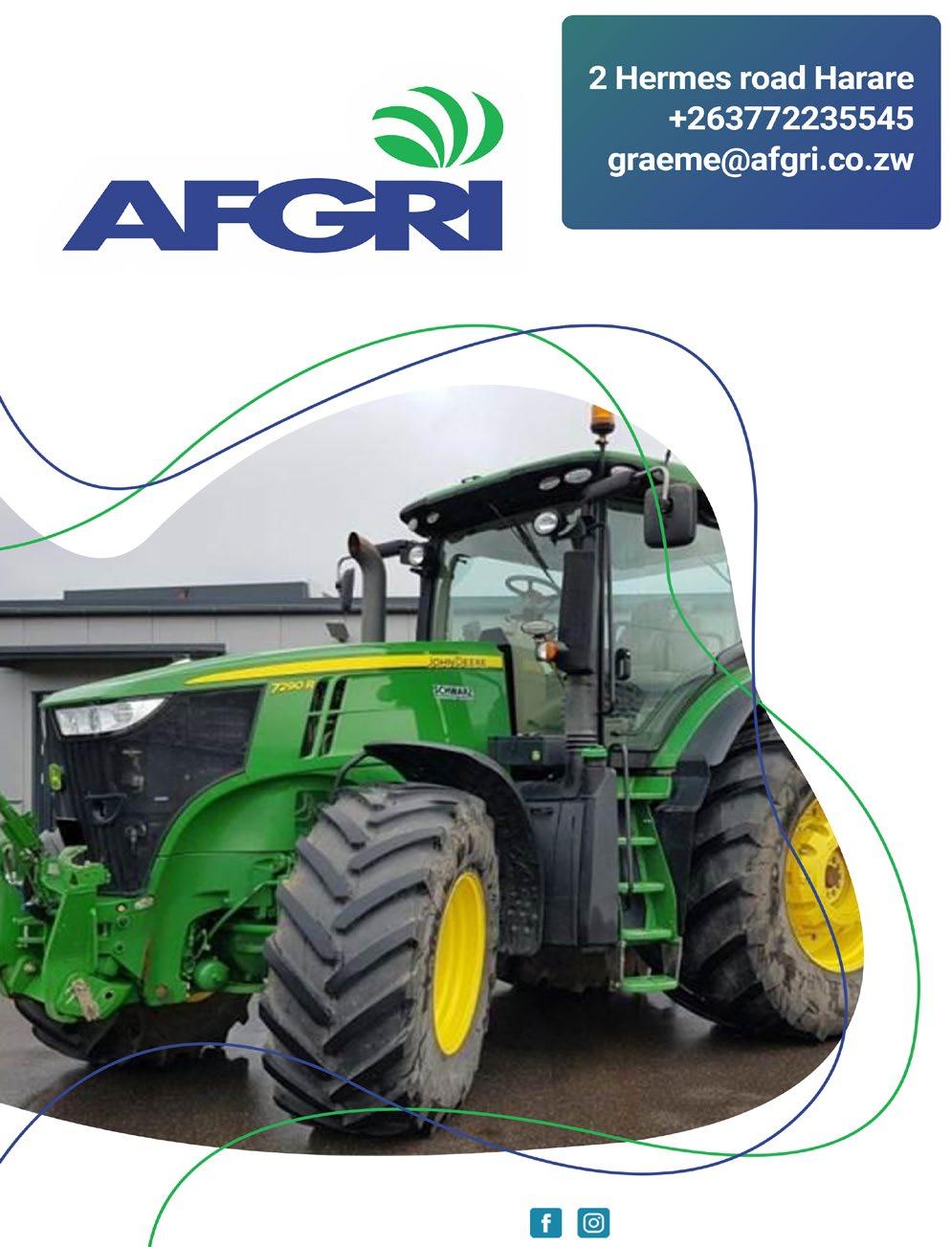
5 minute read
Improve your soil quality with effective soil sampling
from ProAgri BNZ 08
by ProAgri
Improve your soil quality with effective sampling Using the correct tools when taking soil samples can have a significant impact on the accuracy of the results. Photo:calag.ucanr.edu.
by Jaco Cilliers
Advertisement
Tobacco farmers in Zimbabwe are preparing for the coming planting season. Part of this process is raising the seedlings that will be transplanted onto the fields later in the year.
To ensure the best possible outcome, the conditions in which the seedlings are planted need to be perfect. This includes having healthy soil that contains sufficient nutrients and has the correct pH level. Tobacco is sensitive to acidic soils, and the pH balance in the soil can make the difference between a good or bad harvest. It is therefore very important to know what the pH level and the chemical composition of the soil is.
These principles of soil sampling also hold true for the production of other crops.
There are options when it comes to soil sampling. The most effortless, and also the most expensive one, is to have professionals come and take samples from your soil, and then test and analyse them in a laboratory.
The more cost-effective way is to take the samples yourself and send it to a laboratory for tests and analysis.
When taking your own soil samples, there are a number of factors to consider that can impact on the accuracy of the tests. These include: • When to take samples • Where to take the samples • Tools used • Depth of sampling • Frequency • Correct handling of samples should be taken just before you plan to use that particular piece of land. Keep in mind that you also cannot wait too long, because you need enough time to apply corrective measures if needed.
It is also best to collect samples from fields before any soil treatment is performed. Collecting samples after fertilisers or compost have been added may lead to inaccurate sampling. Also avoid sampling in areas where there is too much water. Soil should be moist, but not muddy, for the most accurate samples.
As with any other job, sampling is a lot easier with the right tools. It is recommended to use proper coring equipment because it allows the samples to clearly separate the different layers. This will enable you to get accurate results for each layer. Using

Omnia Cash & Carry
Fertilizer Stock Feed Seed Chemicals

Find your nearest Omnia shop:
40
Bindura Chegutu Chinhoyi Chiredzi Banket Gweru Paisley Harare Dr Boka Auction Floors Mt Hampden Mbare Robson Manyika / 4th Street Bulawayo Road Kadoma Marondera Mvurwi Rusape
Bindura Chegutu Chinhoyi Chiredzi Banket Gweru Harare Harare Harare Harare Harare Harare Harare Kadoma Marondera Mvurwi Rusape +263 772 186 179 +263 772 197 763 +263 782 711 633 +263 782 707 276 +263 782 716 389 +263 772 296 701 +263 772 286 112 +263 772 194 749 +263 778 704 627 +263 772 138 857 +263 782 713 192 +263 782 711 632 +263 782 703 039 +263 772 225 239 +263 775 127 995 +263 772 186 177 +263 778 769 056
ProAgri BNZ 08 NRZ Premises, Robert Mugabe Way, Bindura GMB Premises 248-250 Warwick Road, Chegutu Shop no. 1 Stand no 6 (Old Barclays Bank), Chinhoyi Std 76B Knobthorn Road, Chiredzi 1 91km peg Hre/Chirundu Highway 69B 6th Street, Gweru 8 Paisley Road, Workington, Harare, Zimbabwe 515 of Std 454 Vainona, T/Ship, Vainona 13km peg, Simon Mazorode Rd 17.5km peg Harare/Chinhoyi Highway Shop no. 2 Std 7743A of Std 29629 Arcadia, Mbare Complex Satcoy House, Cnr Robson Manyika & 4th Street, Harare Chirinda Farm, 1 Bulawayo Road, Tynwald, Harare 34 Robert Mugabe Way, Kadoma No. 7 Birmingham Road, Industrial Sites, Marondera Plot no 1 of Umvukwes Flats, Centenary Road, Mvurwi Std no. 1 Magamba Way, Industrial Sites
Keeping the soil samples separated and clearly labelling them will enable the laboratories to give a detailed analysis of the condition of your soil. Photo: solvita.com.

an auger will result in mixing the layers and will cause less accurate results at the depth that you plan to plant.
To test the complete profile of the soil, you need to take samples from three different depths: • First the topsoil that is found in the first 15 cm from the surface. • The second layer is from 15 cm to 30 cm. • The third layer that should be sampled is between 30 cm and 60 cm beneath the surface. There are different methods of sampling that you can choose from. It is important to keep in mind that the sample should be as representative of the field as possible.
The gradient of the soil surface and other variables can result in soil having different levels of nutrients in different areas. The best way to overcome this is by taking multiple samples from the same area.
The following guidelines will enable you to take samples that can produce the most accurate results:
• Between 15 and 20 samples should be taken to improve accuracy. • Separate each core sample at the depths of 0 cm to 15 cm, 15 cm to 30 cm and 30 cm to 60 cm. • After each of the cores have been separated into the different depth categories, the samples of similar depths can be mixed. Store these mixed samples in clearly marked containers. These containers should be plastic and not metal as the metal from the container could influence the samples. • Take 500 g of each of the three mixed samples to send away for testing. • When fields are sloped, take samples from halfway up the slope to get a good average soil quality. Nutrients tend to accumulate at the bottom of a slope due to drainage. The top of the slopes will also have less than the average quantity of nutrients.
Ideally, you would test soil samples before every planting season. This is not always practical due to cost and the labour intensity of soil sampling.
Some farmers tend to sample their soil every second year. This enables them to apply fertilisers as accurately as possible and using the previous year’s tests in alternating years.
When calculating the costs of these tests, keep in mind what the fertilisers will cost that might be applied ineffectively and the impact that it can have on the harvest. Carefully calculate the risks before deciding on a sampling strategy for your farm.
















